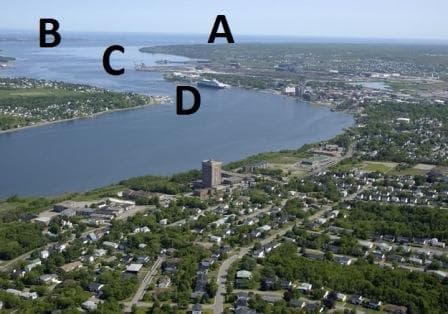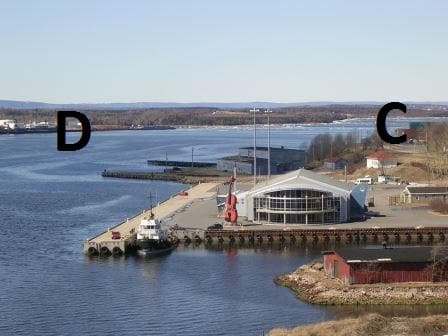For a navigator Sydney is one of the more interesting ports as it offers various number of items that can makes us excited. Thus when the captain assigns one of the navigation officers to do the docking then it gives him or her, from approach to dock, a large number of various challenges to deal with. Quite often the pilot happily helps out by stepping aside and acts as a mentor and advisor instead bringing the ship in himself or herself. When the weather is nice, then Sydney is a good practice port, as it is not too simple but there is also sufficient room – read time – for the Master to carry out corrective action before a real critical situation develops.
So how does this go?
Normally the officer is already conning, which means he/she is monitoring the route of the vessel and checks if it is staying on the agreed course. The Assistant of the Watch is calling the pilot to confirm the arrival time and prepares the ship for arrival. About 15 minutes before the pilot station the Bridge goes to RED manning. This means all the people involved are there (Captain, Staff Captain, Officer of the Watch, Assistant Officer of the Watch, Administrator and two quartermasters.) The Captain advises how he wants things to be done, although everything was already discussed the day before during the Bridge Resource Management Meeting, but things change. Also on all the computers in the ship a red screen appears, indicating: DO NOT CALL THE BRIDGE ANYMORE. (Unless there is a fire of course)
The Officer keeps conning and the Captain takes on a supervisory role unless he assigns that to the Staff Captain so he can help the Officer with the docking. First step is now to slow down for the pilot boat and to make a lee so the pilot can safely step on board. This means adjusting the controls of the propellers to the speed needed and still keep an eye on the traffic around the ship. (This morning the local ferry came at the same time and that can create a distraction if one is not careful)

A: The pilot Station. B: Sailing in on the Leading Lights. C: Turning Area. D: Passing the corner and going sideways to the dock.
Once the pilot is on board and there is agreement that the Officer can continue, he/she has to bring the ship into the Leading Lights of the Sydney Harbor Entrance and make the ship stay on it. The speed goes up again to an average that is acceptable to the Captain and the Pilot. And then all happily sail into the Fjord. Which has a bend in it about halfway in? Now the tricky part starts. Slowing down; as at the end of the Fjord the ship has to stop, swing around and go astern to the berth. Now the Officer can show his skills and ships knowledge in understanding of how long it takes for the ship to come to a standstill as a balance has to be found between not going too slow (and getting there with not much delay) and not going too fast and overshooting (and then having to back up again)

C: The turning Basin, as you can see the ship while going sternways had to sail under an angle around point D. Once at D, the stern can be brought to the dock and the bow can come in once clear of the finger pier. (Note the blue shed has since been demolished)
Once at the location for swinging around, the Officer has to make a decision. First swing around and then move to the Bridge wing for the astern maneuver or go to the bridge wing first and make the turn from there. This involves transferring the controls from the center of the bridge (the conning station) to Starboard or Portside wing (the docking station). Once the ship goes astern you have to be on the wing of the side the ship will dock on, to retain situational awareness and to judge the safe distances to the buoys and the rocks. The Maasdam has to make an 180o turn here before going astern. Pushing the bow and stern thruster is something everybody can do; the challenge is to swing with a fair rate of turn but to stop that swing right on the course needed for going sternways to the dock. And that is not easy, as there is always a little bit of wind and a little bit of current.
Once the ship has been lined up, astern power can be applied, and the ship goes towards the berth. Now the Officer steers with the Stern Thruster and uses the Bow Thruster to adjust the angle towards the dock. Final step is then to stop on time and go sideways until the ship is square against the dock. If all goes well, the whole evolution from pilot to dock can be done in an hour. Normally we schedule 1.5 hrs. from pilot station to the dock so we have extra time on our hands in case something happens. And as we are messing around with boats……….. and the Maasdam is a big boat and there is always something that happens. May it be sailing boats, a wind gust, a ferry going in or out, or the agent who wants the gangway in a slightly different location.
We had a chilly but sunny day in Sydney where the temperatures managed to get to 16oC / 61oF, but there was a cold wind blowing from the South East. Tomorrow we are in Halifax and there we are supposed to have rain in the early more and an overcast day for the rest.

June 1, 2017 at 4:37 am
Please put me back on your list to receive your blogs